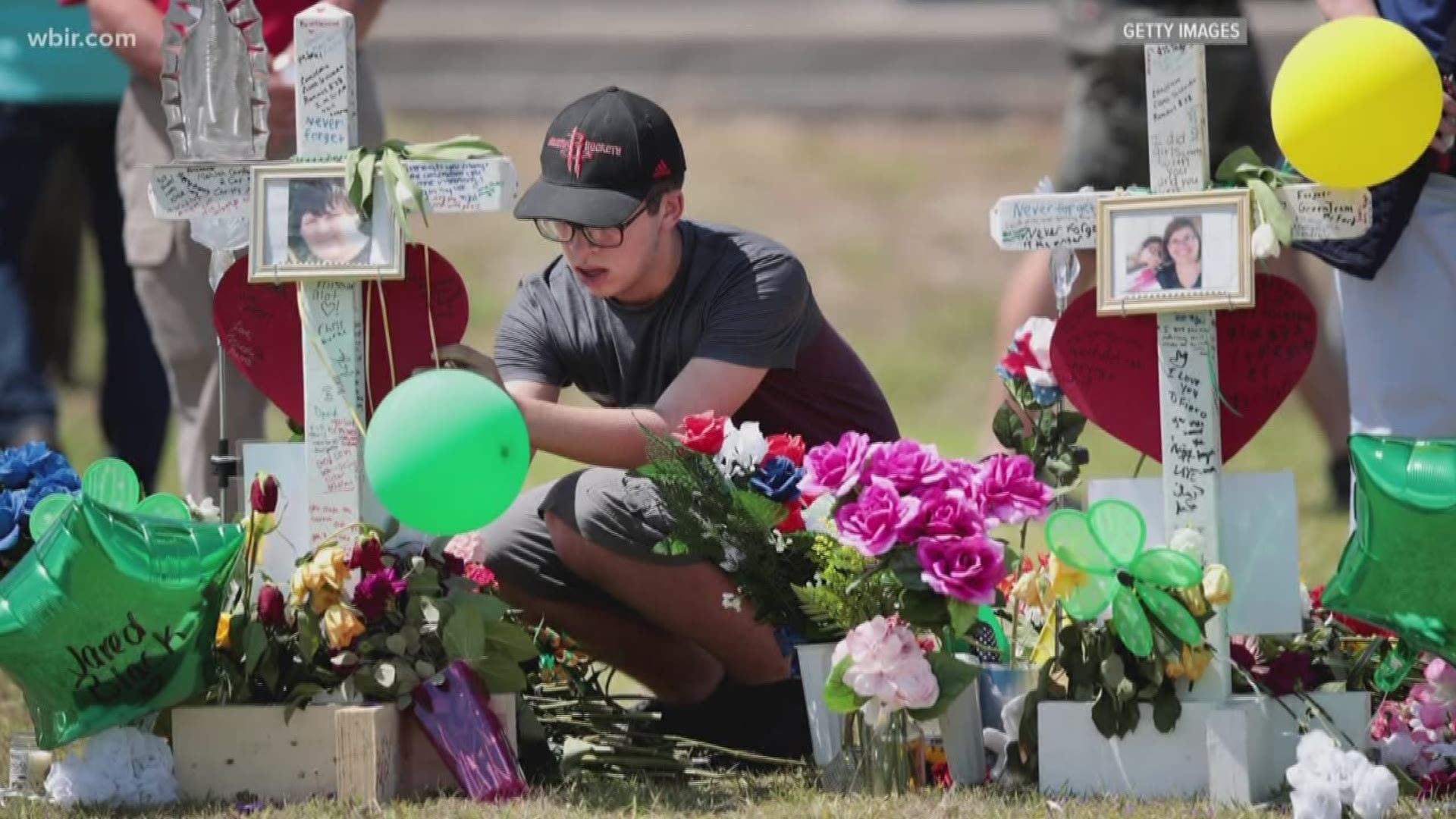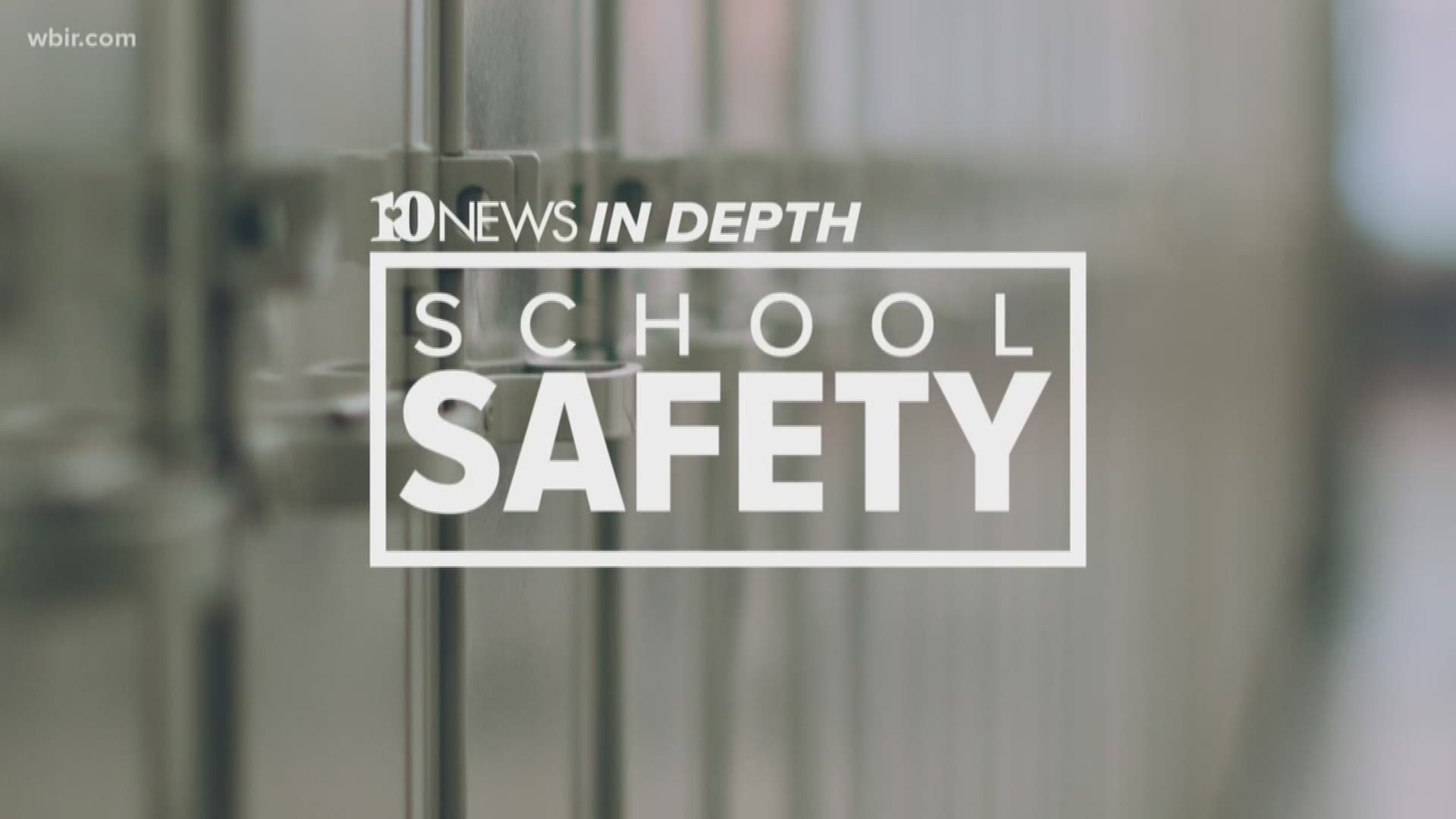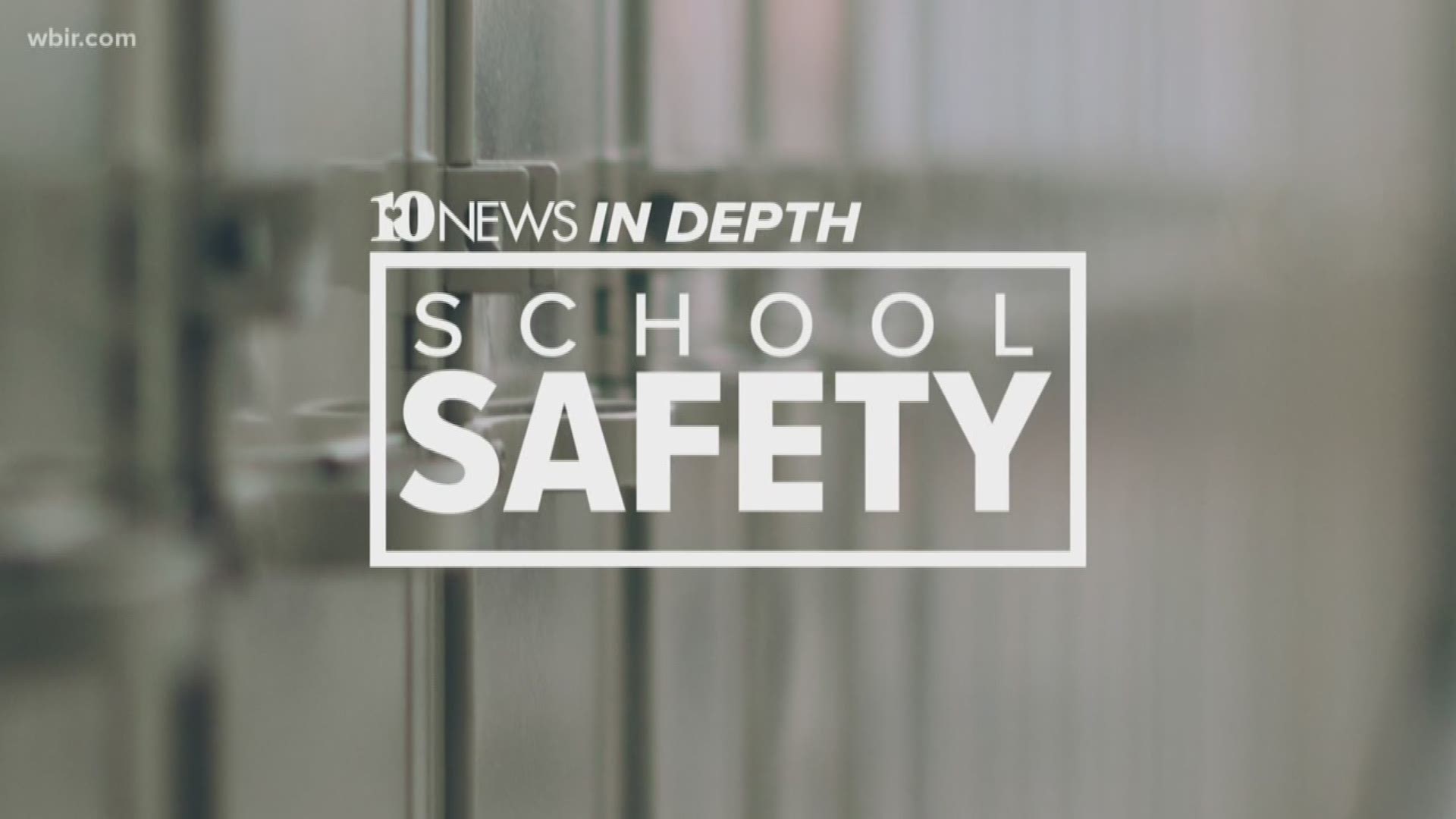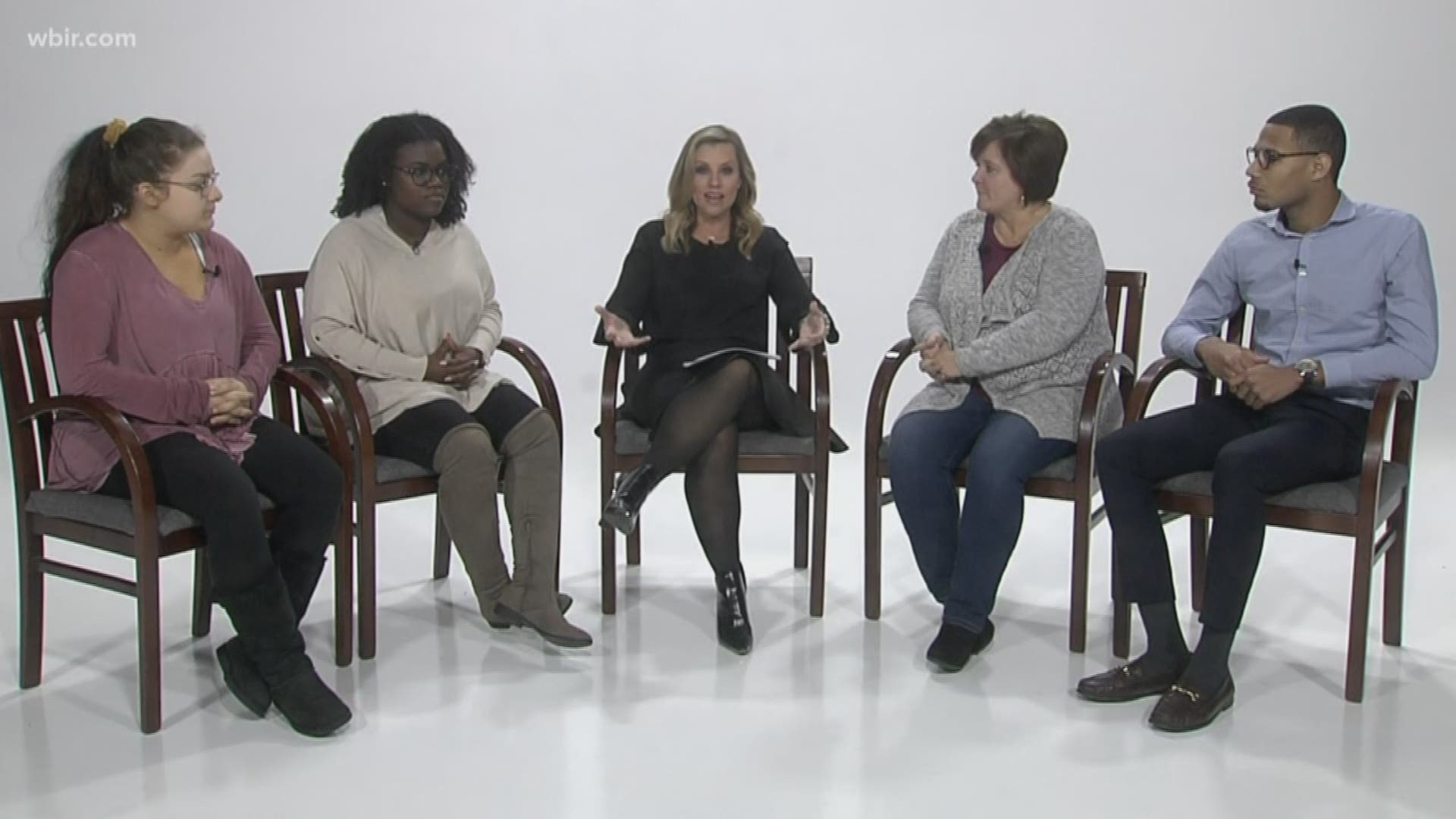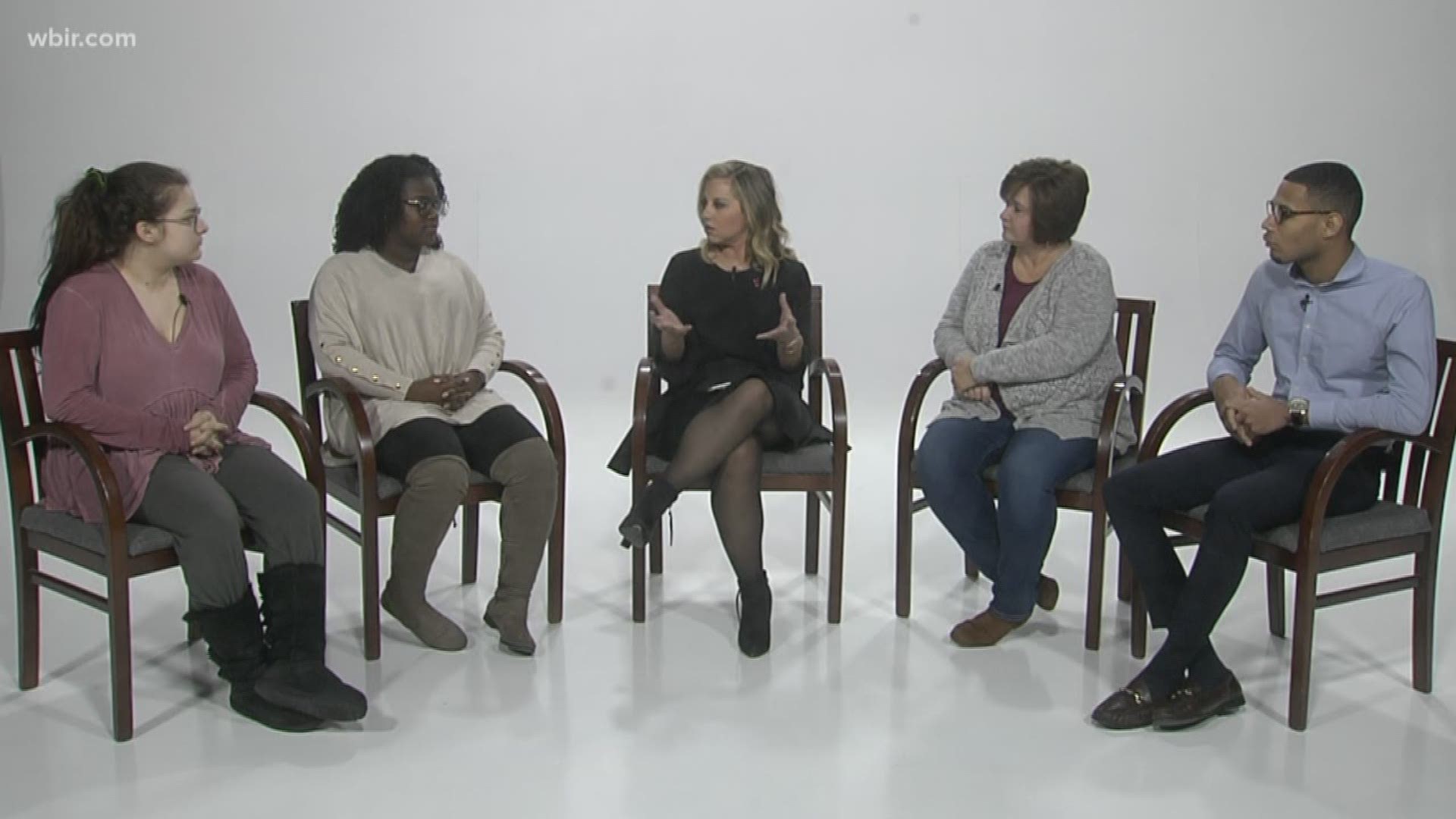KNOXVILLE, Tenn. — 2018 was a year marked by high-profile mass shootings across the country, from Parkland, Florida, to Thousand Oaks, California.
And there were many more that didn't make national headlines.
The United States had at least 340 mass shootings this past year, the Gun Violence Archive said, an independent research group.
It was one of the deadliest years on record for mass school shootings across the country.
In January of 2018, two were killed and 14 were injured in a shooting at a high school in Benton, Kentucky.
Then in February, 17 were killed and 17 more were injured at a shooting in a high school in Parkland, Florida.
And in May, 10 were killed and 13 were injured in a shooting at a high school in Santa Fe, Texas.
29 killed. 44 injured. In America's schools.
_______________________________________________________________
Safe at school?
Now, this year will mark 20 years since the Columbine High School massacre, what many consider the start of modern mass school shootings in America.
You may never forget the moment you learned of the shooting at Columbine High School.
April 20, 1999. 12 students and one teacher dead. Dozens more injured.
“That wake-up call, it changed our protocols, changed our response," Oak Ridge Police Officer Barry Bunch said. "It changed everything that we do. Our tactics were outdated.”
Bunch has decades of law enforcement experience. He now handles all active shooter training for schools in Oak Ridge.
“We had to change the weapons we were carrying, we had to change our training, we had to change even our body armor,” Bunch explained.
But the biggest change, according to Bunch, is that officers no longer wait to respond.
“Here we train our officers, you get there, you get in and you stop it, you don't wait,” he said.
And school has changed for kids across the country, too. Now, it’s filled with locked doors, code reds, drills, police officers… and lockdowns.
More than 4.1 million students in the US went through at least one lockdown in the 2017-2018 school year alone, according to reporting done by the Washington Post.
Those can happen even at preschools. One Knoxville preschool has changed its security protocols and even practices active shooter drills to keep its children safe.
“When I first started here, our front door wasn't even locked, and we just pretty much had open access to the school,” Marty Troutman, the preschool's director, said.
Since then, Troutman has made safety one of her top priorities.
“Through the years, we've added, of course door locks, camera equipment, drills. Each parent has their own security code, each person on their emergency list has their own security code,” Troutman explaind.
Active shooter drills in a preschool might sound shocking, but many believe it’s necessary to protect children.
“You hear people interviewed that say ‘we never thought it would happen here, we didn't think it would happen in our area, our school, our town,’ and you finally realize nobody ever thinks it's going to happen, and we felt it was time to start preparing our kids. It's never too early to learn to be safe,” Troutman said.
But at the same time, she works to make sure the drills aren't too scary for her students.
“We want them to know it can be fun, which anything to a child that's fun they're going to like it, they're going to remember it," she said. "But we also want them to learn that sometimes being safe means being quiet and pretending."
Those drills have become a norm for this generation of students. So too have school resource officers based on school campuses.
Bunch said having those SROs there is key to keeping schools safe.
“In this situation [a school shooting], time is life, so what's going to work better-- having someone there that's already there to deal with it or calling someone to come from somewhere else?” Bunch said.
It's a harsh reality.
“It's sad for me to think that these children are growing up in world where they can't have that feeling of security, but yet I'm very glad that early on they can know to be careful,” Troutman detailed.
________________________________________________________________
Lockdown Generation
How have these lockdowns and safety procedures affected the generation that grew up in post-Columbine schools?
It’s traumatized them. It’s made them feel powerless, Dr. Renee Repka, a clinical psychologist in Knoxville, said.
"It makes us feel like we have no control in this world, that we are helpless in this process," she said.
And all of that can take a toll.
“It leaves residue for the kids, so they don't sleep at night, they're more scared of things. For the adults as well. It sort of hits everyone,” Repka explained.
Being able to digest these issues can be difficult for a young mind.
School children today were not even born when Columbine happened, the shootings of 13 people in their safe place, their school.
Even now, high school seniors were only 10 or 11 years old when the Sandy Hook Elementary massacre dominated headlines.
But whether children fully understand these mass shootings at schools or not, their effects can be felt every day.
Local mom of three Lesli Douglass is sad things are so different now than from what it used to be.
“I was a 70s, 80s kid, and I think in so many ways my kids have bigger pressures, they have to deal with a lot more. There's a lot more in their face,” Douglass explained.
But while it's in their face, they also might feel helpless to do anything about it.
"And that's what's unsettling, and that's what creates anxiety," Repka said.
Parents included.
“We are the first parents who have to parent children in this type of culture,” Douglass said.
So what are some ways to parent the children of this era?
“What we know about what helps kids grow safely and soundly and develop in really strong ways is that they know their environment is safe and secure, and they know that they are loved,” Repka said.
With younger kids, Repka explained, you should ask questions if they seem upset and acknowledge that the world can be scary.
“But then shift the conversation to how do you take care of yourself, how does that make you feel, how were the other kids in your class, what can I do to protect you,” she said.
That is exactly what Douglass said she practices in her own home.
“That's really scary, that's really sad, was anyone at school talking about this today? How did that make you feel?” Douglass said she'll ask her kids. “I don't want to make an isolated incident the rule.”
Repka also suggests encouraging older kids to turn stress into action.
“Staging a walkout, marching for our lives, talking about gun control, talking about mental health issues, it gives us power back, it gives us a sense of control, and that takes steps towards feeling more resilient, safer and more confident about our capacity to be safe and take care of ourselves,” she said.
________________________________________________________________
What can we do?
And almost a year after Parkland, have we seen anything change?
We’ve seen those student victims start a nationwide movement to end the violence. But mass shootings across the country have continued to take more lives.
Just two months ago, the shootings in a country western bar in Thousand Oaks, a synagogue in Pittsburgh and at the Tallahassee hot yoga studio all happened within weeks of each other.
After each shooting, the team at 10News didn't know how we could cover any new aspect of these shootings.
So we asked you-- how can we stop this, how can we spread enough love to fight the hate in this world? We posted a video with those questions to IGTV that took off, with more than 15,800 views to date. And one of your comments on that video sparked an idea-- to put together a panel of those who face the reality of these shootings everyday—students and parents— and to hear from them about how they feel every day going or sending their child to school.
Here is part one of that panel:
Here is part two of that panel:
And here is our continued discussion on Facebook Live:
Have a news tip or want to be part of the discussion? Email 10Listens@wbir.com, or visit our Facebook page or Twitter feed.
►Make it easy to keep up-to-date: Download the WBIR 10News app now and sign up for our Take 10 Lunchtime Newsletter.
________________________________________________________________

